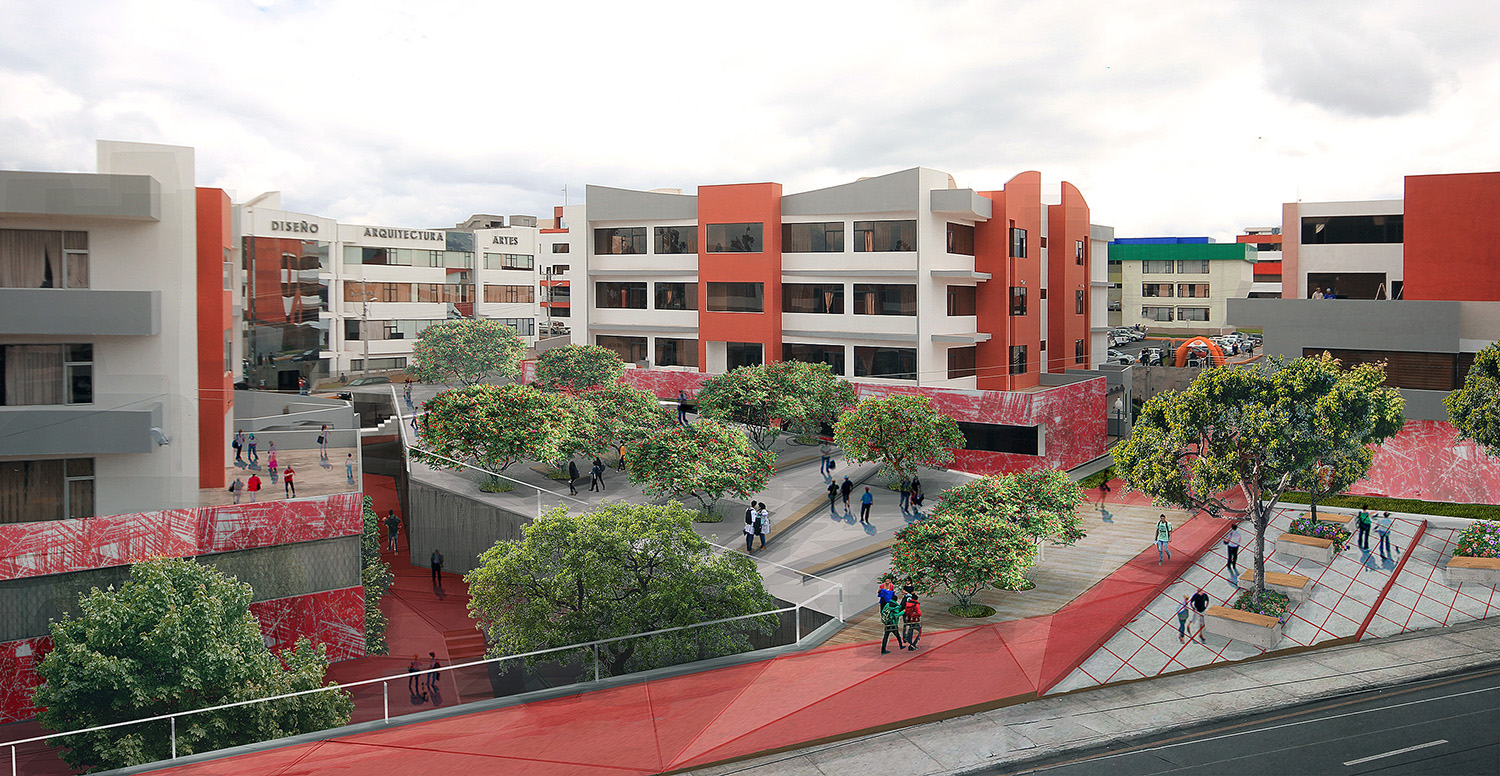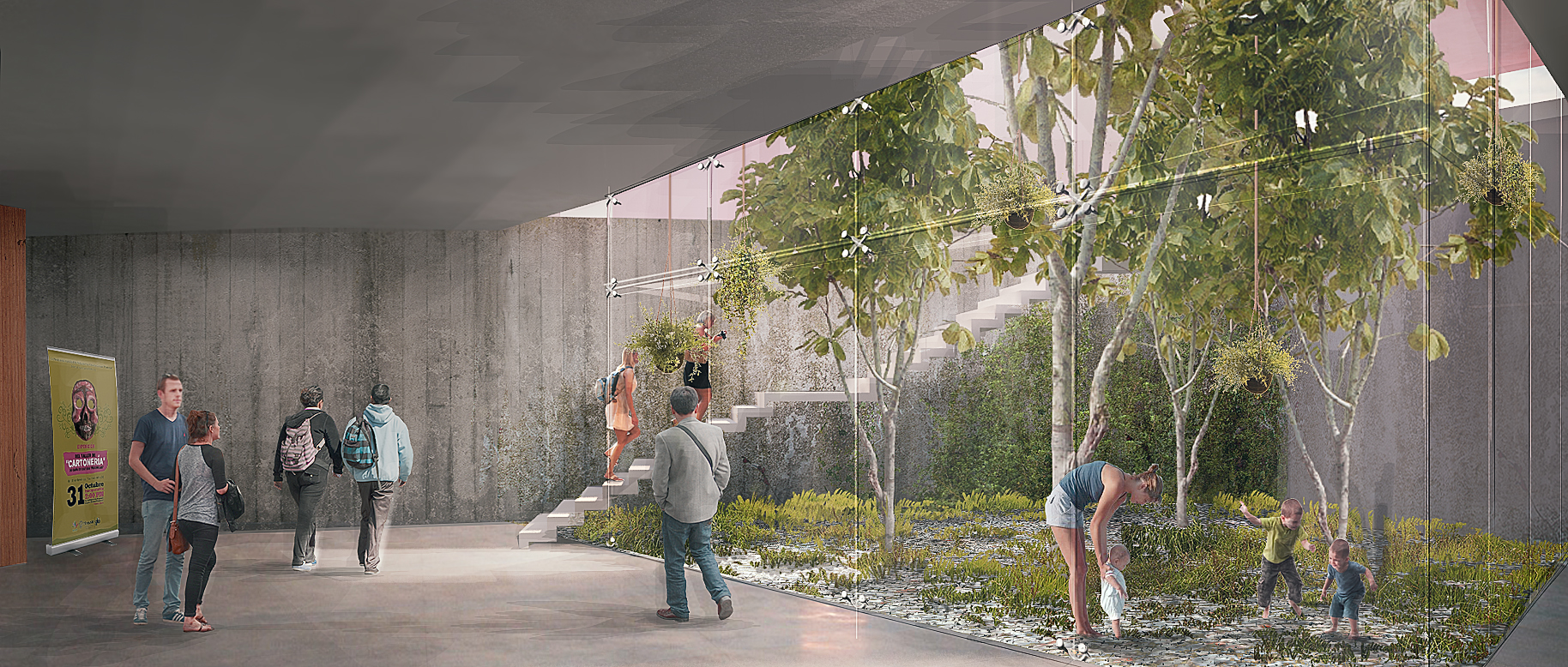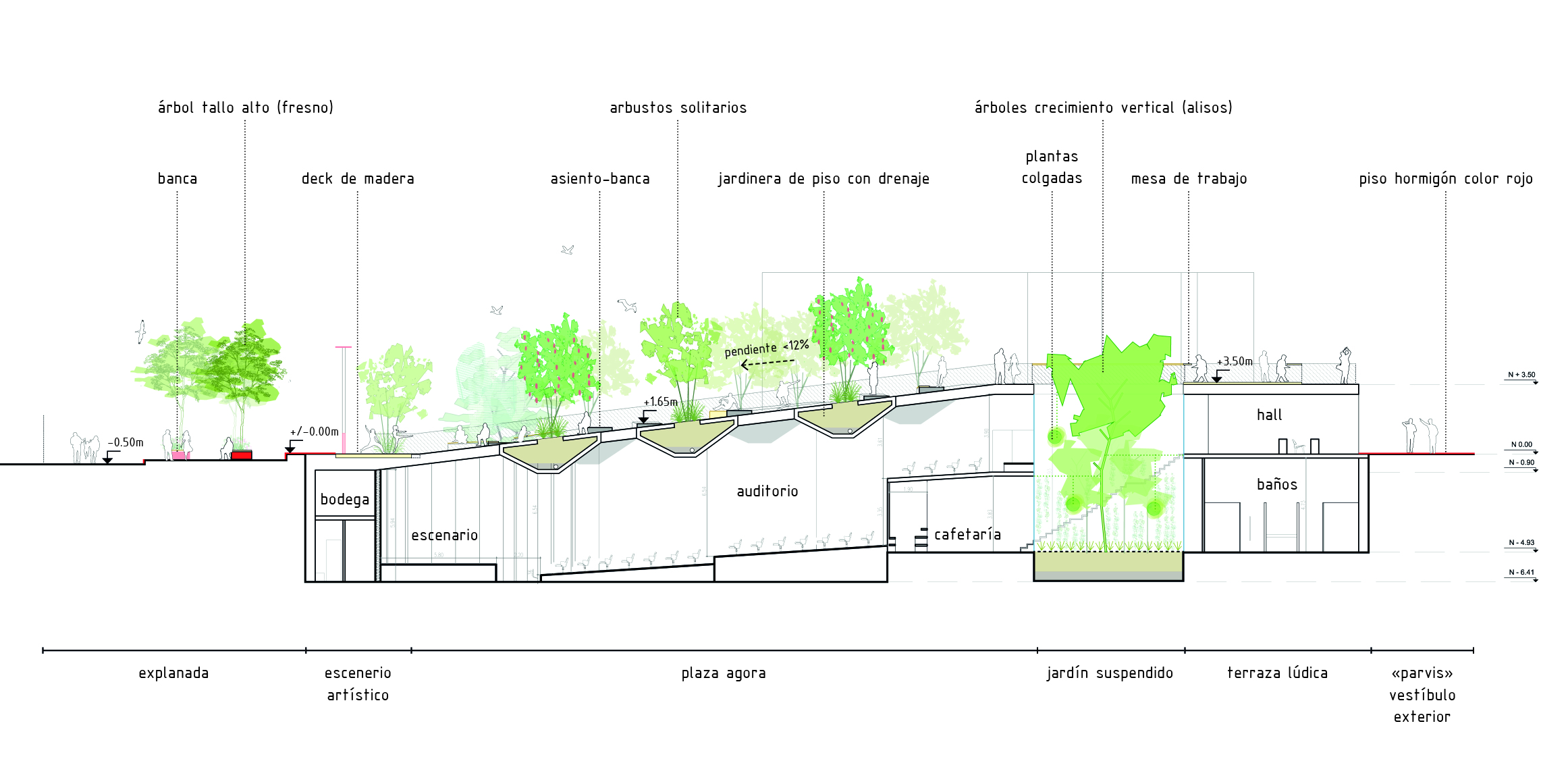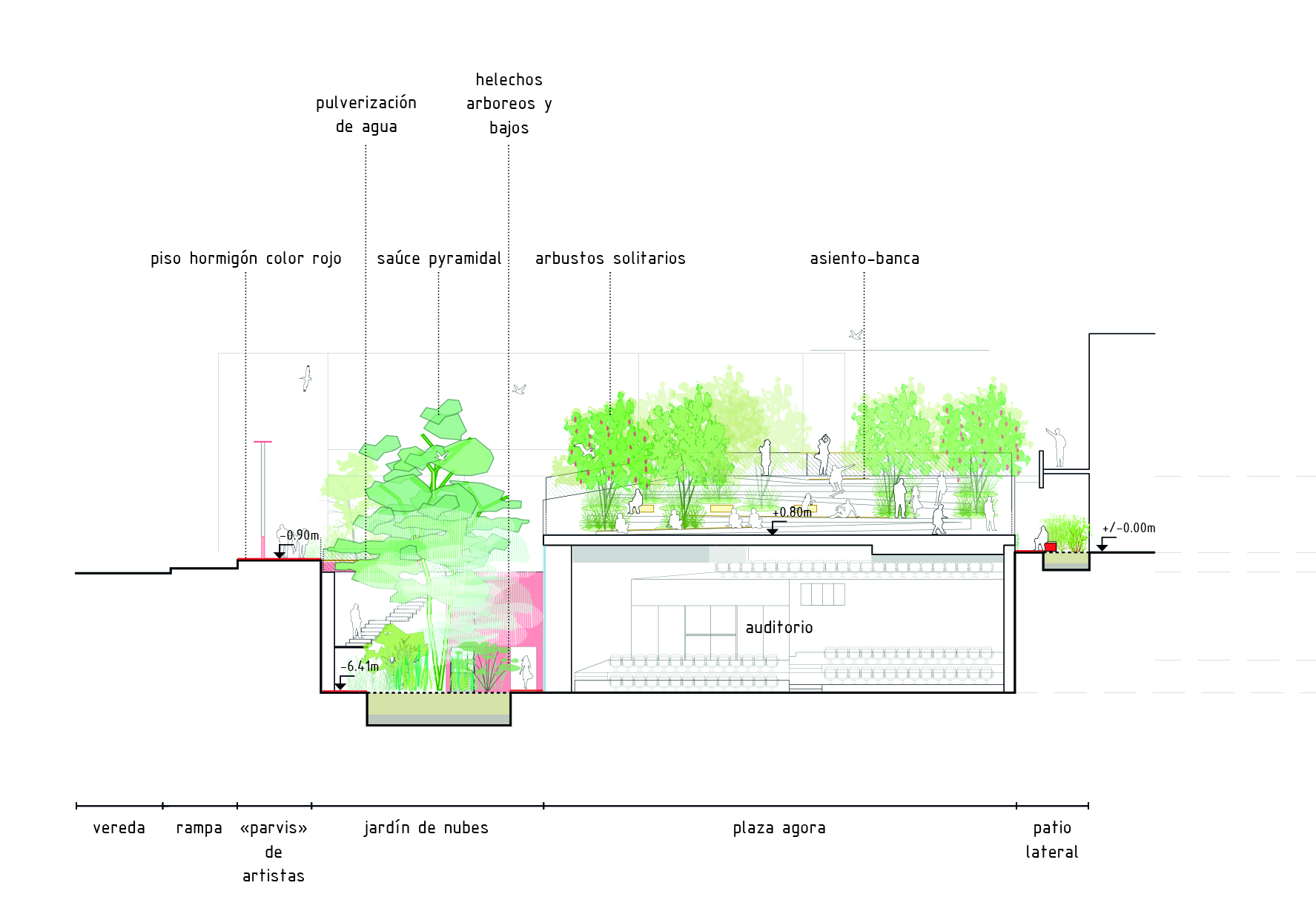Auditorium “Universidad Técnica de Ambato”
Antecedent
Retrieved from the book “Creación de la Universidad Técnica de Ambato” (Dr. Pedro Reino).
Ambato is the capital of the province of Tungurahua, it is located virtually in the center of the Ecuadorian Andean region, surrounded by snow-capped mountains and volcanoes.
The Universidad Tecnica de Ambato (UTA) was created on April 18, 1969, as approved by the National Congress. It was born with the slogan "Education is learning to be free”
The request
Project an auditorium for 400 people in the space between the Faculty of Tourism and Human Sciences and Faculty of Education. The project is located in a triangular site between the two faculties. Currently, the place is used as a parking lot.
The idea
It is proposed a structure that links the university with the city and this integrates into the built environment, for this reason, it is decided to partially bury the spaces that need covered spaces and liberalize the outer space to facilitate the stay, leisure, study, and meeting in the university community. The EXTENSIVE RAMP generated by the sloping roof is an urban scenery, where student life develops and, at the same time, gives the city a public space as an outdoor auditorium.
The RAMP allows the union of the two adjacent faculties by a route that connects the terraces of the existing buildings. The spaces are generated using outdoor furniture that allow users to stay, rest, or study.
This element is proposed as a structural slab which creates a system of pots, which allows planting trees, providing shade to this area. It was decided to work with native vegetation, mostly adapted to local conditions and low maintenance. Only the internal gardens and the side yards of the building will use a drip irrigation system to ensure its maintenance over time.
Spatially, the interior is distributed through two courtyards of light and vegetation. The first courtyard, known as ENTRANCE PATIO, welcomes visitors with a suspended garden.
This is an articulating point of the project because all the paths are centralized around it.
The first patio intends to alter the user's perception by being 6m underground. This large hole of 25 m2 creates the sensation of ENTERING OUTSIDE, the entrance of natural light to all interior spaces.
Around this patio is located, as an edge, the entrance hall on a higher level, and the auditorium lobby on the lower level.






